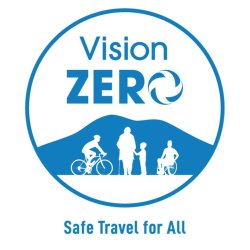
| ||||||
This presentation followed a Vision Zero presentation to the council on Oct. 12 from Tim Haile, executive director of the Contra Costa Transportation Authority. Moran encouraged the council to carefully consider costs, downtown improvements already planned that might reasonably be put on hold in order to consider the plan's impact, and staffing needs such as a transportation manager and traffic safety engineer to support the project.
Other concerns included lesser, but still important, realities: possible longer emergency response times (examples: beacon lights, speed humps and/or lane reductions implemented to increase pedestrian safety or provide more bike lanes could restrict and might slow emergency vehicles), and no guarantee that Vision Zero would change behaviors of drivers and cause citizens to walk, bike, reduce speeds or take similar actions that increase public safety.
Receiving questions from the council after his update, Moran said synergistic, cooperative projects undertaken with other cities - or simply Lafayette on its own adopting the Vision Zero plan - would allow access to increased grant opportunities. Lafayette's Local Roadway Safety Plan (LRSP) has already been awarded state grant funding. Among the first tasks of a contract transportation engineer recently hired by the city is to solicit proposals for the LRSP. After selecting a consultant, a technical advisory committee will be formed to help with plan preparation.
Outlining the format largely shaped by Vision Zero protocols and guidelines, Moran clarified the stark differences between the city's 2003 Traffic Calming Guidebook that outlines an extensive public process to implement traffic-calming measures. That process required the community to come together, often in multiple meetings, to develop a consensus on the safety strategies to implement. Neighborhoods were most often responsible for funding the approved traffic-calming improvements. Under a Vision Zero policy, safety measures would be implemented expeditiously by city staff. Addressing safety concerns for the most vulnerable users would take precedence over concerns about traffic congestion, aesthetics, and public opinion. Moran said the plan might, for example, reduce or eliminate on-street parking in a specific congested corridor in the downtown to create a bikeway.
Council Member Carl Anduri at multiple times during the discussion expressed concern that a promised joint city council and transportation-circulation committee meeting had not taken place. He said the committee should be involved now and represented on the task force that is ultimately formed. Finding agreement from other council members, Moran and City Manager Niroop Srivatsa confirmed members of the commission were in attendance at the council meeting, would be included in planning, and will be represented on the task force.
Although Vision Zero follows a standard format, the plan enacted in Lafayette can include specific details. Moran pointed to examples such as improvements the General Plan already outlines, such as improvements made near schools, increased connections between roadways and county trails, and more.
Council Member Gina Dawson acknowledged the importance of making improvements that encourage more people to walk and bike in the downtown core, but emphasized also taking steps to increase access for seniors and other people who move within the city by means other than walking or biking.
In public comments, Grace Dixon said, "Anything done to get residents out of cars and have them walk is a good thing, not only morally or philosophically, but it is good for businesses when people slow down and see the shops."
Stella Wotherspoon predicted the city will have more residents living in Lafayette in the next eight years and said safety issues "will increase or continue unless active transportation modes are implemented." Calling Vision Zero a plan in which "we will all win." Wotherspoon said state funding under the last Highway Safety Improvement cycle gave Danville and Moraga approximately $240,000 for improving bike and pedestrian safety. Drawing the link between grant funding and Vision Zero, she suggested it is economical and practical to implement the plan's infrastructure changes that indisputably will come with costs.
Jessica Lordan told the council she currently holds a petition with over 300 signatures in support of actively implementing Vision Zero. She said, "Infrastructure costs money, but what are lives worth, right? We have real citizens of our city that are dying on our streets because of real drivers from our city." Aside from loss of life, Lordan emphasized that the project will mean getting more grants, suggested response times can be addressed by flex-time lanes, and characterized aesthetic concerns about asphalt berms as "enough of a buffer" and suitable for Lafayette, a small city not in need of big city-style fixes.
The Vision Zero task force will include residents, such as a person involved with Lafayette schools or a representative from the senior community, and will be established by the professional consultant, with input from city council and the transportation-circulation commission. Srivatsa said a December meeting will include recommendations for staffing, duration the task force will remain in place, and other timelines.
Reach the reporter at:
